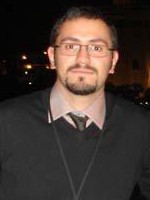resumo
A flexible, adaptable, economical and easily scalable processing route, allowing microstructural control, is presented. It involves classical solid state sintering method and addition of liquid promoting compound. Controlled porosity and high thermoelectric performance have been attained in Ca3Co4O9 by K2CO3 additions, drastically improving the sintering procedure. K2CO3 behaves as transient liquid phase, providing microstructural benefits, vanishing during sintering. Electrical resistivity was improved by enhanced grains connectivity and growth. Significant increase in Seebeck coefficient at high temperatures has been produced while lattice thermal conductivity was unaffected. The best ZT value, estimated at 800 degrees C, assuming the thermal conductivity value at 140 degrees C, is 0.35 for 5 wt.% K2CO3 samples. These values are significantly higher than that obtained in highly-dense textured materials at the same temperature. The results suggest that this approach is very effective for preparing highly -performing Ca3Co4O9-based thermoelectric materials with relatively high porosity to control thermal conductivity. (C) 2015 Elsevier Ltd. All rights reserved.
palavras-chave
TEMPERATURE THERMOELECTRIC PROPERTIES; SINGLE-CRYSTALS; TRANSPORT-PROPERTIES; AG ADDITION; CERAMICS; SUBSTITUTION; ENHANCEMENT; GROWTH; FIGURE; OXIDES
categoria
Materials Science
autores
Sotelo, A; Costa, FM; Ferreira, NM; Kovalevsky, A; Ferro, MC; Amaral, VS; Amaral, JS; Rasekh, S; Torres, MA; Madre, MA; Diez, JC
nossos autores
Grupos
G2 - Materiais Fotónicos, Eletrónicos e Magnéticos
G3 - Materiais Eletroquímicos, Interfaces e Revestimentos
Projectos
agradecimentos
The authors wish to thank the MINECO-FEDER (MAT2013-46505-C3-1-R) and Gobierno de Aragon-Fondo Social Europeo (Research Groups T12 and T87) for financial support. The technical contributions of C. Estepa and C. Gallego are also acknowledged. Authors would like to acknowledge the use of Servicio General de Apoyo a la Investigacion-SAI, Universidad de Zaragoza. This research was also partially supported by FCT, Portugal (IF/00302/2012 and PEst-C), project RECI/CTM-CER/0336/2012 co-financed by FEDER, QREN reference COMPETE: FCOMP-01-0124-FEDER-027465, and the projects financed by national funds through the FCT/MEC: UID/CTM/50025/2013, UID/CTM/50011/2013.







